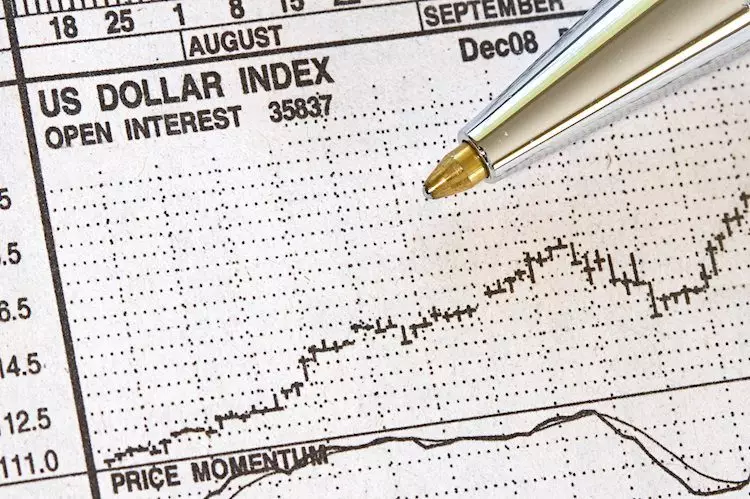The fluctuations in the US Dollar’s value encapsulate the considerable complexity of global finance. Notably, on the recent Friday, the Greenback appears to be retracing after an aggressively bullish trend, reflecting the broader economic landscape and geopolitical nuances affecting currency exchanges. This article seeks to examine the circumstances surrounding the Dollar’s current status, the underlying economic indicators, and the implications of forthcoming monetary policies.
The recent movements of the US Dollar Index (DXY) are indicative of a market reaction to a confluence of economic information and events. Traders are currently keenly observing China’s strategic shift toward economic stimulus, including the reduction of deposit rates aimed at bolstering domestic consumption. This intervention is critical as it sends ripples through global markets, causing the Dollar’s upward momentum to stall near the psychologically significant threshold of 104.00.
Scheduled releases, such as housing data from the US Census Bureau, are also pivotal, particularly with expectations surrounding monthly building permits and housing starts. Analysts await the September figures carefully, noting a slight decrease from August’s numbers. These statistics are not just numbers; they offer insight into the health of the housing market and, by extension, the broader economy.
Additionally, scheduled speeches from prominent Federal Reserve officials, including Raphael Bostic and Neel Kashkari, contribute to the narrative. Their addresses at educational events and policy panels underscore the Fed’s commitment to transparency and education amid economic uncertainty. The perception of stability and proactive measures by the Fed plays a crucial role in shaping trader sentiment towards the Dollar.
A substantial factor influencing the Dollar’s recent pullback is the positive reception of China’s stimulus measures, prompting Asian equities to react favorably, with Chinese indices outperforming their peers. The ripple effect is evident in European markets struggling to process the implications of European Central Bank President Christine Lagarde’s recent remarks regarding a sluggish economy.
US futures remained indecisive amidst these fluctuating global market conditions, reflecting uncertainty about forthcoming economic indicators and policy directions. The prevailing market sentiment embodies apprehension, especially considering forecasts for interest rate changes. The CME Fed rate expectations for the upcoming meeting paint a picture where investors overwhelmingly predict a modest rate cut.
As the benchmark US 10-year rate hovers around 4.11%, reflecting the market’s expectations, the Dollar’s current pause doesn’t suggest a full reversal. Instead, it indicates a market recalibration, as traders digest significant economic stimuli while considering geopolitical factors, particularly in light of the forthcoming elections in the US.
From a technical perspective, the resistance levels for the Dollar remain crucial in understanding its future trajectory. The 200-day Simple Moving Average (SMA) at 103.80 serves as a key obstacle. Should the Greenback manage to breach this resistance, a swift ascent to higher levels, possibly towards 105.00, could ensue — particularly if political scenarios align favorably for leading candidates like Donald Trump.
On the downside, crucial support levels emerge at the 100-day SMA around 103.19. This level will be pivotal in determining whether the DXY will hold steady in the face of downward pressures. Moreover, additional support exists below at the 55-day SMA (101.85), suggesting a safety net should selling pressure intensify.
The current Relative Strength Index (RSI) suggests an overbought condition, prompting analysts to speculate a possible correction. Traders often interpret such signals as prerequisites for potential pullbacks, reinforcing the critical nature of these support and resistance thresholds.
Broader Economic Context: The 2023 Banking Crisis
An overarching theme influencing the current dynamics has been the reverberations from the banking crisis that unfolded in March 2023. Distress among US banks, particularly those heavily tied to tech and cryptocurrency, exposed vulnerabilities in their balance sheets. Significant events, such as the collapse of Silicon Valley Bank due to liquidity stresses, challenged previous expectations surrounding interest rates.
The ensuing crisis triggered a shift in market sentiment regarding the Federal Reserve’s tightening policy. Market participants recalibrated their forecasts, anticipating a milder approach from the Fed in light of weakened banking stability. This had a pronounced impact on the Dollar, as such adjustments to monetary policy favorably positioned gold as a safe-haven asset, further eroding the Dollar’s appeal.
Overall, the rollercoaster trajectory of the US Dollar amid tumultuous global and domestic economic conditions encapsulates both the challenges and predictions for its near-term future. Stakeholders must navigate these evolving landscapes with diligence and insight, adjusting their expectations in real-time as new data emerges. This multifaceted environment illustrates the intricate balance between policy actions, market responses, and economic indicators that ultimately steer the value of the US Dollar.

